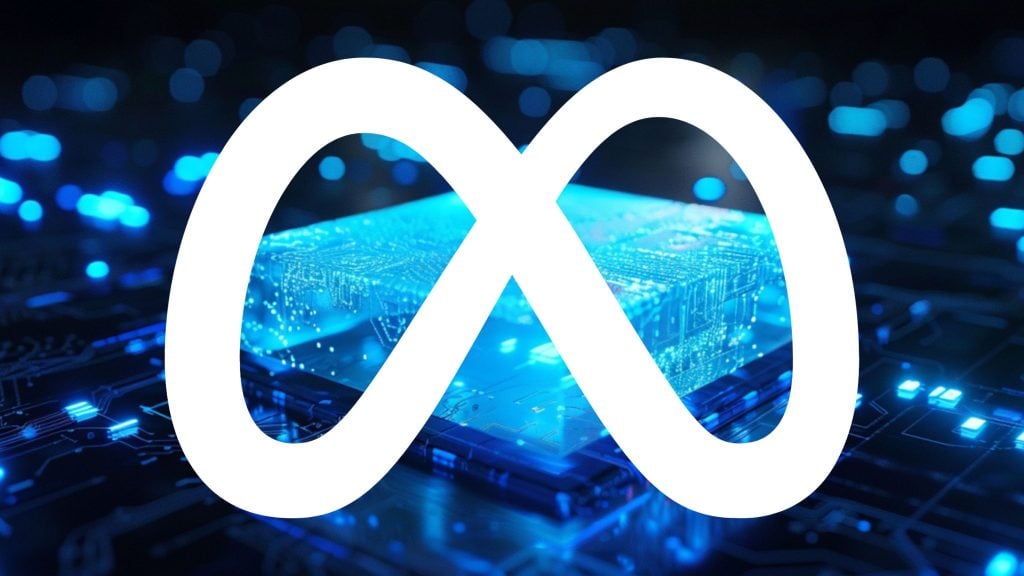The 21st century is still a “teenager”, but it has already developed a gnarly technological dependency. Technology is deeply interwoven with every side of human life: resource management, financial administration, social relations, work and business – all strictly rely on software and hardware to function nowadays.
By leveraging on this dependency, the tech giants grew to be empires in the global economy, extending their reach to as many aspects of society as possible – in some cases setting the trends, or if you will, imposing the changes.
The last couple of years have seen Mountain View’s tech giant Google spending a great deal of effort on promoting their healthcare and education products. Especially in the education field, Google was able to go from zero to stardom – imposing itself as the new global educational benchmark, and, according to some accounts, it is rapidly escalating to a monopoly.
Educational products have for the vast majority an underage audience and require uploading personal data to be able to function. Is it wise to put our kids’ data in the hands of big-tech, in the era of data-harvesting and privacy scandals?
Google rise in the education field – from possibility to monopoly
A New York Times’ article detailed the marketing strategy that opened the school gates to Google and, in the space of five years, led it to dominate the educational business by outmanoeuvring its adversaries – Apple and Microsoft.
At present, there are 30 million U.S. students using Google educational apps like Docs and Gmail; and Chromebooks – Google-powered low-cost laptop -represent more than 50% of the devices shipped to schools. “Between the fall of 2012 and now, Google went from an interesting possibility to the dominant way […]” commented Hal Friedlander, ex-chief information officer for the New York City Department of Education. “Google established itself as a fact in schools.”
According to Google educational app group’s director Jonathan Rochelle, in doing so Google is setting the ground for one of the biggest philosophical changes in education – de-emphasizing academic knowledge like math and focusing on teaching skills such as teamwork and problem-solving.
“I cannot answer for them what they are going to do with the quadratic equation. I don’t know why they are learning it” said Rochelle referring to his kids. “And I don’t know why they can’t ask Google for the answer if the answer is right there.”
Google makes $30 for every device used in the schools. Not much, some might think. However, there could be a trade-off: by acquainting students to its environment from an early age, Google aims at obtaining something more valuable – future customers.
Some parents, like David Barsotti – an information technology project manager in the Chicago area whose kids are using Google tools in school – are concerned that Google might be “working on developing a profile of this child that, when they hit maturity, they are able to create a better profile. That is a problem, in my opinion.”
Google’s rise to power in the education business started in 2013 when Mr Rochelle, one of Google Docs’ developers, teamed up with a few other employees to create apps for schools. To spread the use of these apps, Google sent his global education ambassador Jaime Casap on a nation-wide motivational campaign aimed at educators. Rather than promoting the products, Casap convinced the educators that the new online tools would be beneficial to students’ academic and professional careers. By speaking directly to teachers, Google bypassed district administrators.
“Teachers really helped to drive adoption of Google in the classroom, while Apple and Microsoft continued to leverage traditional sales channels,” stated Phillip Di Bartolo, the chief information officer of Chicago Public Schools.
The business practice of leveraging on the educators to effectively spread the use of a new set of tools to their peers is quite common among education tech firms. Google, however, has successfully applied these techniques on such a huge scale that some say the company has co-opted public school employees to achieve its market dominance.
According to the president of EdTech Strategies Douglas A. Levin, parents and teachers should pay attention to Google’s presence in the public education system and examine “how those in the public sector are carrying the message of Google branding and marketing”.
Mr Bout of Google disagreed and commented that his company’s outreach to educators was an effort to improve education by “helping teachers learn directly from their peers”.
Chicago is the largest school district in the United States, perfect to act as a role model for other school districts to follow. In Chicago, Google’s teacher-focussed marketing tactics played out very well.
Mountain View’s giant had in its hands a product the purpose of which was, until that moment, unclear: the Chromebook – a simplified, low-spec/low-cost laptop powered by Chrome operating system and web apps. It was the perfect product to place in the schools of a district fighting to shave-off education costs.
In the fall of 2011, Google invited administrators to its Chicago offices to meet his ambassador Mr Casap. Instead of talking specs, Mr Casap cleverly set the topic for the conversation, pointing out to how technology could become the great equalizer, breaking down education barriers between rich and poor.
Mr Markey, principal of East Leyden High School, was immediately converted. He abandoned his previous plan to buy 3,500 Windows laptops for his students and wanted the Chromebooks instead.
Google advantages with respect to the competition, summed up to a cascade effect led to more and more educators choosing Chromebooks.
According to some critics, stating that technology is an equalizer is a gimmick that only strengthens Silicon Valley’s self-promoting agenda. It plays on educators’ altruism to get schools to buy devices and apps and it “centers learning on technology, not students”, leaving out important aspects such as the teacher to student ratio.
By 2016, Chromebooks represented a staggering 58% of the mobile devices bought by primary and secondary schools in the United States, up from the original 1% of 2012. Google doesn’t directly make money from Chromebooks, manufactured by third-parties such as Acer or Samsung. It charges a service fee of $30 per device. In Chicago, this figure adds up to a total of $33.5 million spent on 134,000 Chromebooks.
Privacy concerns

Unlike its main competitors Apple and Microsoft, that make money mostly by selling software and devices, Google produces most of its income with targeted ads based on user’s data. This raises concerns over the practices with which Google acquires and manipulates underage users’ data.
Google did not provide an exact breakdown of what the company might be collecting from the students and why. Education unit director Bram Bout pointed to a privacy note that lists the categories of information that Google’s education apps collect, such as the location and “details of how a user used our services”.
Bout pointed out that student data in Google’s educational products “is only used to provide the services themselves […]”. The services do not show ads, and “do not use personal data resulting from these services to target ads”.
According to Mr Basotti, parent and project manager in the Chicago area, Google knows if his daughter logged on to docs from his home device. “If this is truly for educational purposes, what is their business model and why do they need to collect that [information]?”
Google’s student data-handling practices have been the center of many controversies. In 2014, the company was in a tight spot after Education Week reported that it had acknowledged “scanning and indexing” student email messages sent using Google G Suite. Google replied that the company has since then stopped that practice.
Across 2015 and 2016, the privacy-advocating group Electronic Frontier Foundation filed a complaint against Google with the Federal Trade Commission, mentioning that the company was using information collected from GAFE users who use other Google services in ways that violate the volunteer Student Privacy Pledge.
The then-U.S. Senator Al Franken demanded answers.
The tech giant acknowledged its data-harvesting practices on students outside G Suite, in a letter to the U.S. Senator dated 12th of February 2016 signed by Susan Molinari – Google vice president for public and government policies. It included information on the type of information the company collects from students who venture outside of the GAFE to use other services.
“If a school permits access to one of Google’s additional services outside the GAFE core services, such as Google Maps, Google collects the information described in our Privacy Policy. The information we collect in these services is similar to that collected from any other Google user and includes:
- Information the user gives us, including personal information like name, email address, or telephone number.
- Device information (such as your hardware model, operating system version, unique device identifiers, and mobile network information including phone number).
- Log information, including user entries like maps queries, the network’s IP address, and device event information such as crashes, system activity, hardware settings, browser type, browser language, the date and time of the request and referral URL.”
If any of this information is associated with a student’s G Suite account, according to the letter, some additional protection for that student kicks in—allegedly Google will not use the information to target ads. However, Google’s letter does contain references to commercial purposes:
“Google may use the data from additional services outside of the GAFE core services for the purposes described in our Privacy Policy, which include, for example, product improvement and product development. We make further commitments for GAFE users in our GAFE Privacy Notice, including a commitment not to use personal information from K-12 GAFE users to target ads. In other respects, the additional services outside of the GAFE core services work for students just as they do for any other user.”
Google’s letter also addresses other issues:
- What kind of information is collected on students within G Suite and how it used (personal, device, and login information, but only to provide those educational services)
- Whether Google has ever used personal information to target ads to students (unclear)
- Whether it is possible for the company to require parents to opt-in to the types of data collection described above (the company puts the burden on schools).
- Whether Google shares or sells student information (only under exceptional circumstances commonly cited by most companies)
According to then-Senator Franken, the company’s response was thorough, however, there are issues he hopes to further clarify.
“I’m still concerned about what Google does with the information it collects and processes from students who are browsing outside websites—like YouTube—while logged into Google’s education service,” he said. “I’m also still interested in whether or not Google can provide parents and students with stronger privacy protections.”
The company’s letter mentioned that it is up to schools to allow students to venture outside of GAFE and to ensure parental consent for allowing them to do so.
According to Joel Reidenberg, a law professor and privacy advocate at Fordham and Princeton universities, this is not enough: “Number one, school administrators are generally not informed that this is what Google does. Second, we have very strong public policies trying to get schoolchildren online for educational purposes and Internet research. If administrators follow those [policies], and kids are logged into Apps for Education, this is letting Google spy on them.”
State and federal laws and the voluntary Student Privacy Pledge, signed by Google and more than 200 other companies, cover only the information collected within an educational service.
However, the core data mining process starts in the moment users logged into G Suite to venture to the company’s search engine and other products. In other words: even though Google has to comply with strict privacy policies for its education apps, it has a way to gather data from other related products, link it to students’ profiles, and use it for commercial purposes.
Mr Reidenberg commented in an interview that this is “the first time that Google has admitted that it is, in fact, spying on children in schools. They are appropriating [students’] educational login to be able to track students when they use the [account] for non-Apps for Education purposes.”
Industries representatives argued that Google is in his rights to do this and should be applauded. The company appears to be doing its best to navigate through the difficult waters faced by all the tech companies that provide both commercial and educational products.
It is still unclear though; what Google means when it refers to “commercial purposes”. The answer might come from the people that actively use the educational products on a daily basis – students. Some of these younger users are starting to investigate in depth the extent to which they might be under digital surveillance by Google and what tools are being used.













